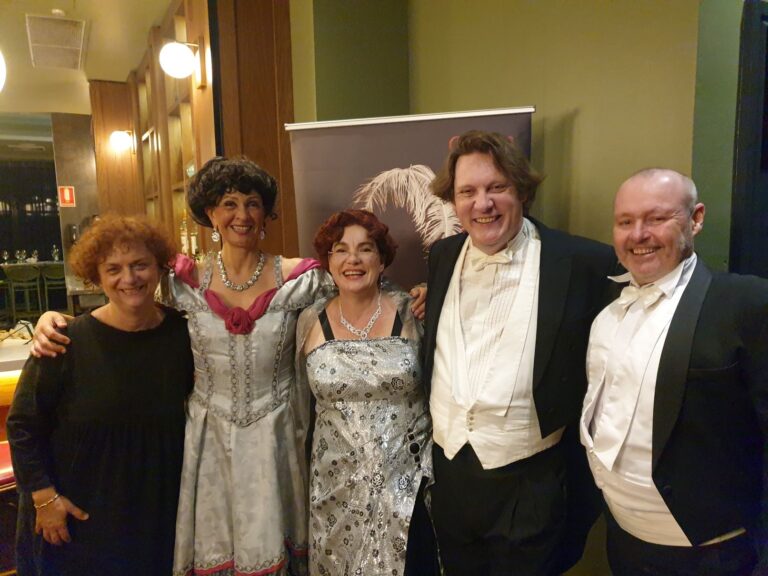
Whither Oxford Street: a green shoot or a failure of planning?
COMMENT
Reshaping or revitalising urban precincts is a tricky task. Places like Darlinghurst’s Oxford Street are nothing more or less than the sum total of human activity in that area, a balance between what people do and build there, and what authorities impose on it.
In Sydney, authorities are always trying to impose their visions. The ideal of genuine ground-up change coming from empowered citizens may be approached in places like Seattle’s City of Neighbourhoods, but it is a distant dream in our ‘City of Villages’.
Hence the running difficulties between Council and the Darlinghurst Business Partnership (DBP) about what to do with the place.
Oxford Street used to be the epicentre of gay culture, the recreational drugs scene and a focus for edgy new undergrounds that occasionally burst into the mainstream, driving popular culture. Much of that is still there but gay culture has changed, itself become almost mainstream, more diverse, and shifted westward. Creatives in torn T-shirts have been replaced by upmarket persuaders who commute elsewhere to work in an office. The price of a basic flat excludes anyone on a low income.
Pill-popping, gay-friendly, happy groovers have for several years now been searched relentlessly by sniffer dogs and their police minders, who trawl nightclub queues and invade venues, killing the party. For some reason, breath-testing for alcohol is random but sniffing for less dangerous drugs is culturally targeted. Now, many of the groovers go elsewhere, or take their drugs before they go out, then drink more, leading to further restrictions such as the unpopular 2am lockouts.
Venues need punters, and promoters have filled the vacuum with rent-a-crowds from the suburbs, straighter drinkers who bring with them enough homophobics and macho thugs to change the face and feel of the place.
The RTA made the place a no-parking throughway for traffic feeding the Eastern Suburbs. The Eastern Distributor does its job with traffic feeding the north, but the failure of the Cross-City Tunnel has left Oxford Street the quickest and cheapest way to drive east-west, and they do, in droves.

…………
Westfield opened in Bondi Junction and sucked life out of small independent retailers in its catchment. And Council, which owns all the buildings for two blocks on the northern side of the street around Crown Street, has failed to execute its plans to develop a new retail centre and a medium-priced hotel in the upper floors. Much of the space above the shops sits empty, while shopkeepers wistfully count the lost dollars all those workers and guests would be spending during the daytime.
Then Council upgraded the street, a process which kills business. Recovery always takes years and the makeover has little effect on larger demographic and cultural forces. Council also bans street enterprises so it is illegal to paint portraits, sell dodgy watches or tell fortunes on the street. Busking is banned after 10pm, midnight on weekends. The outdoor hot-dog stands and all-night newsagents have gone, along with the fun. There is little left to do but get drunk at night. And Council wonders why that’s exactly what people are doing, and what further regulation they can impose to stop it, never dreaming that regulation might be exacerbating the problem in the first place.
To top it all, Council has passed on an unexpected land tax bill, hitting shopkeepers with a massive slug of $15,000 to $30,000. While the Sydney Harbour Foreshore Authority wore the pain for their retail tenants, Council has taken a back seat and left its tenants at the mercy of a voracious state government. It’s almost as if Council WANTS more vacant shops along the strip.
It’s a tough call, but a core of Darlinghurst business people – savvy operators with experience, energy and a vision – work through the DBP, meeting regularly with Councillors, staff and CEO Monica Barone. There is goodwill on both sides but according to DBP president Andrew Duckmanton, a gulf of misunderstanding prevails.
“We want to be planned with, not planned for,” he said.
His group has tried to go back to basics and work out a fundamental strategy for the street. At a recent function that packed the top floor of the Oxford Hotel, he presented a plan. Council’s strategy divides the inner east into precincts, he says, which define Oxford Street as an edge, a divide rather than a centre. Council’s strategy maps have it sitting between the centres of East Sydney, Surry Hills and Paddington – a non-space.
“This shows up in all sorts of ways,” he said. “Council strategists automatically make plans for the precincts surrounding Oxford Street and leave Oxford Street out. Yet it is the retail hub for these primarily residential areas.”
He presented an alternative map that showed Oxford Street as a centre, and he is taking this to meetings at Town Hall. When asked for comment, Council concentrated on its Art and About events “planned for” the street.
But herein lies the problem. A great program is planned for the street, this year featuring indigenous art. Nice idea, and everyone is PC and supportive, but what does that have to do with Oxford Street? Is it something unique that has evolved from the street itself and nourishes local culture, or is it just another art exhibition, planned from on-high, that will come and go?
Andrew Duckmanton will keep trying: “We give Council A for effort,” he said. “But there is much work to be done to truly celebrate Oxford Street culture and we look forward to working with Council over the coming year.”
by Michael Gormly









